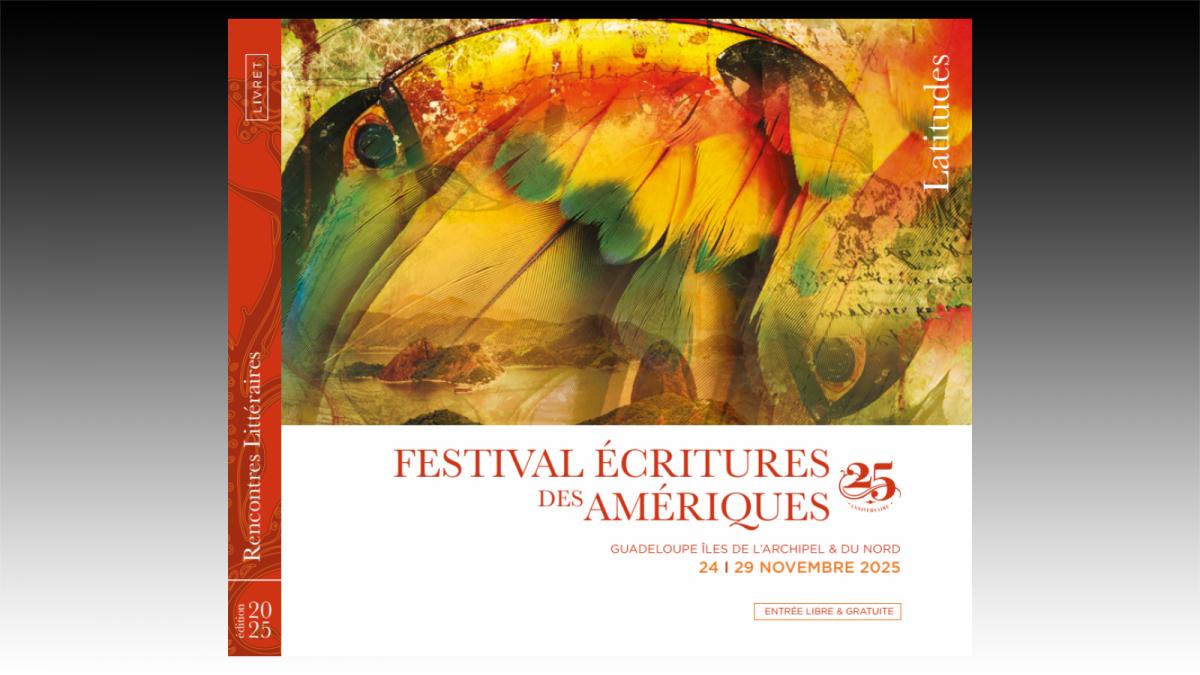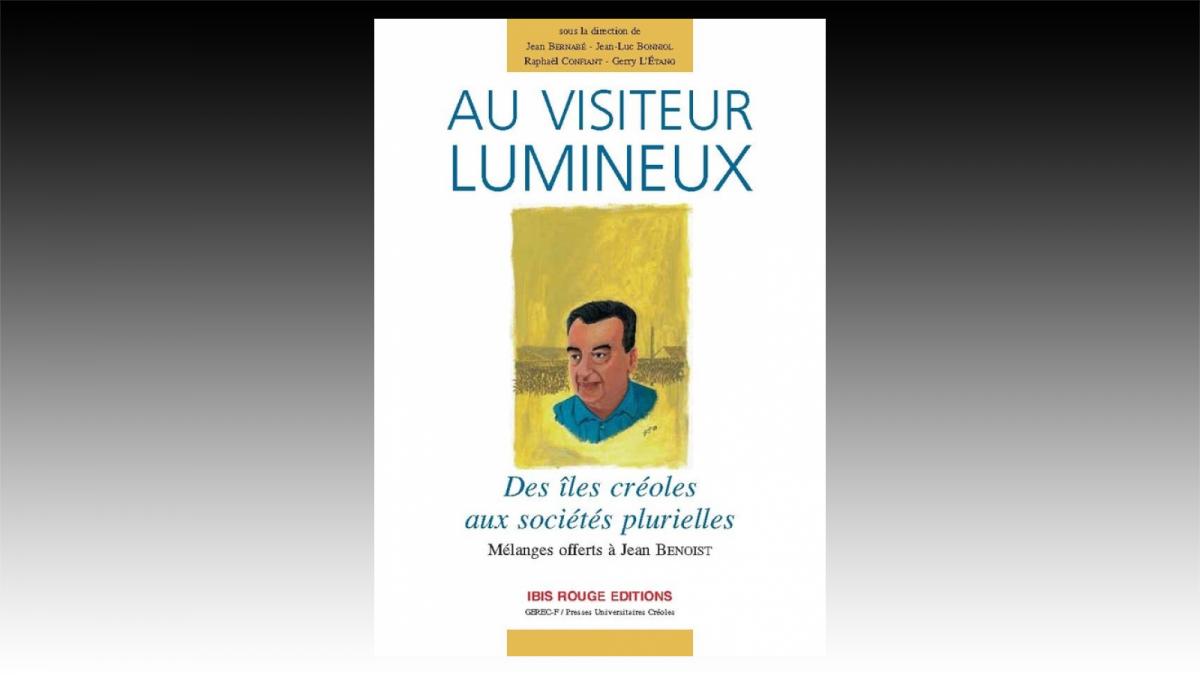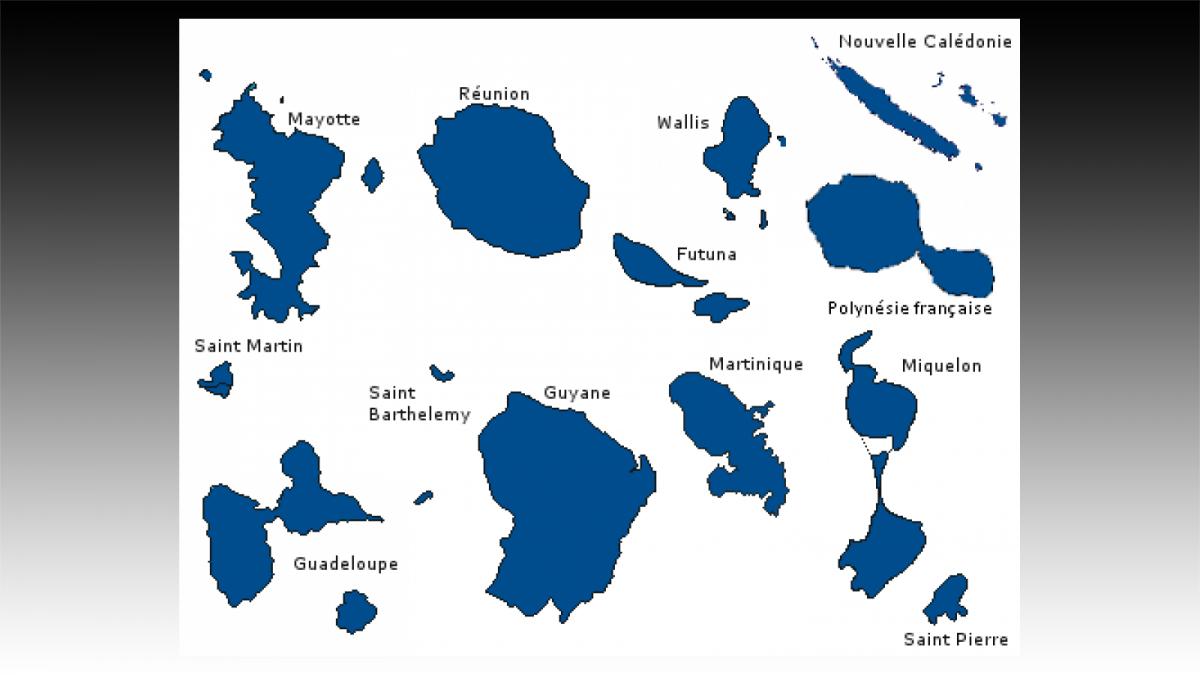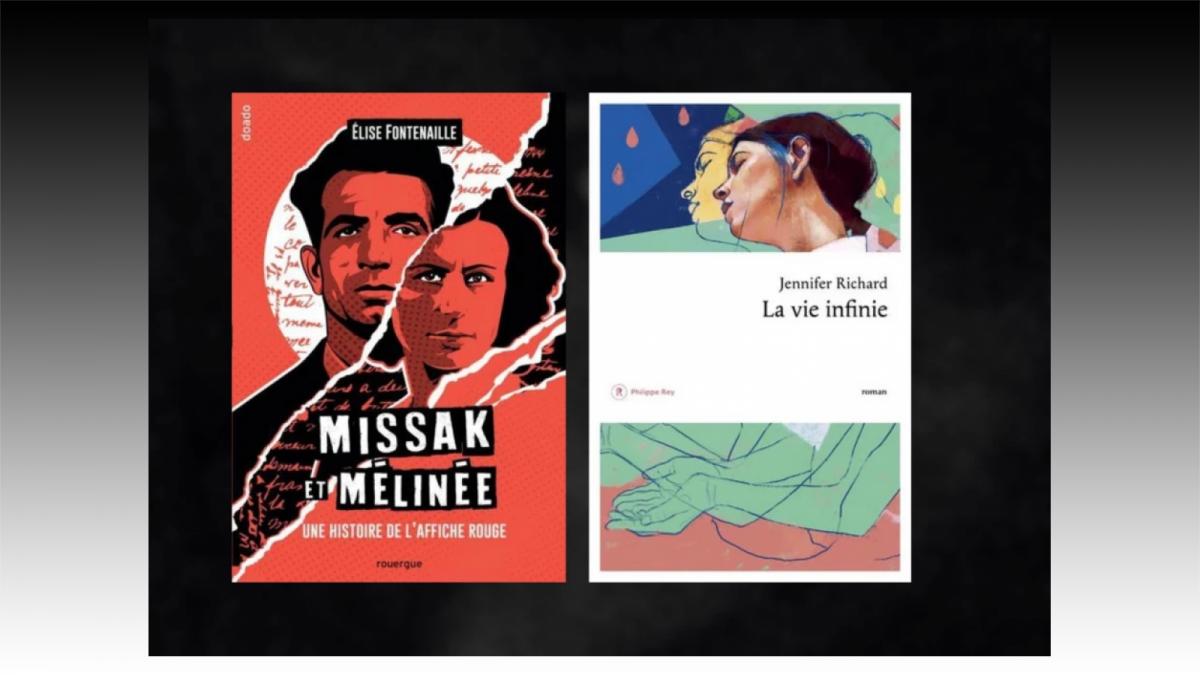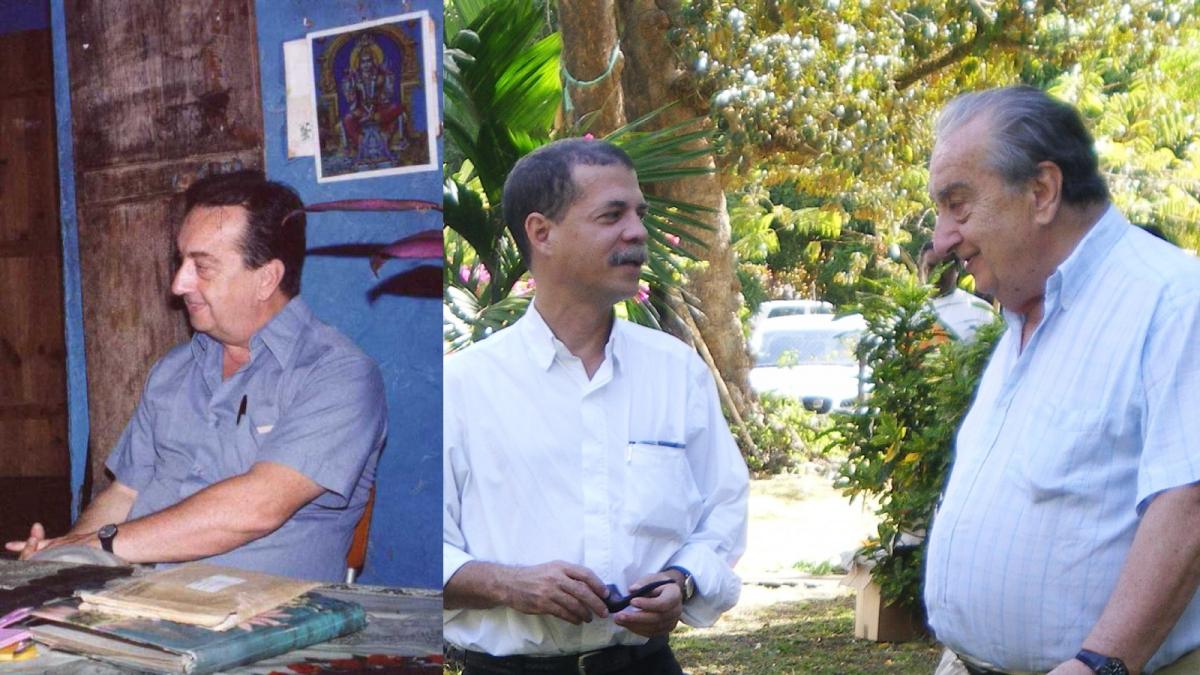Michèle Boulogne : “hands tend to think faster than head!”
Ewen Chardonnet ("Makery")

Based between Rotterdam and Martinique, Michèle Boulogne is an artist and textile designer. Her research questions the cultural and social context of imaginary space exploration, and lies at the crossroads of visual arts and textile experimentation.
Michèle regularly hijacks tools of geographical representation such as maps and remote sensing, and questions the influence of these instruments on the cultural imagination. In 2023, the artist embarked on a research project into the history of the Caribbean archipelago in order to inform current issues in extra-terrestrial exploration. She will present her research at the next International Astronautical Congress in Milan this fall. With Michèle Boulogne taking part in the More-Than-Planet project, Makery met her at the LASER event “Une autre planète” organized by Leonardo OLATS association in Paris last spring.
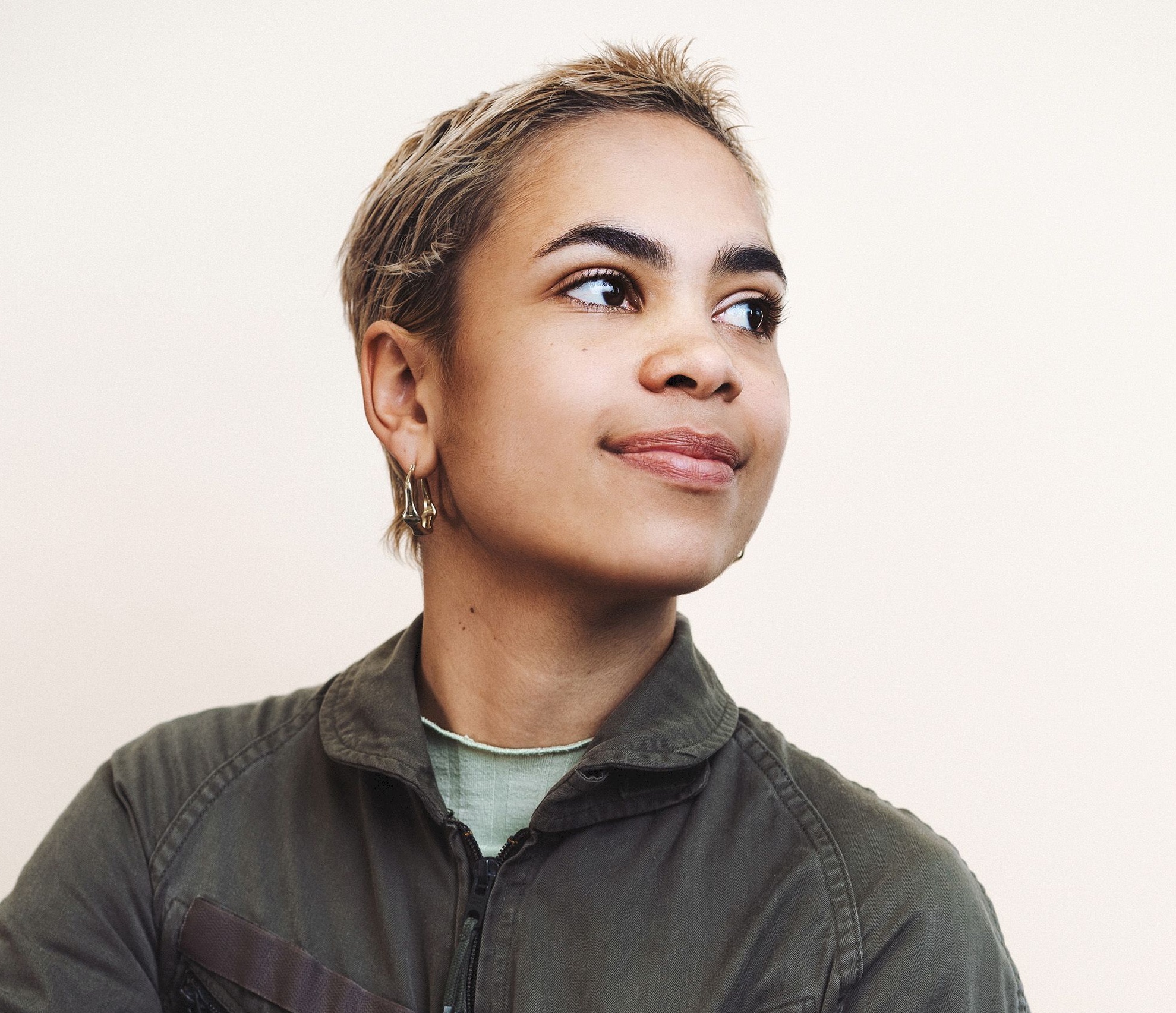
Michèle Boulogne. Photo : Rosella Fennis
Makery: You grew up in Martinique, so could you start by telling us a little about your background?
Michèle Boulogne: I grew up in Martinique indeed, it’s a french island in the Caribbean and it’s a special place to be a kid. I wouldn’t be asking myself the same questions in my practice today if I hadn’t been exposed to the beauty of luminescent plankton, leatherback nesting turtles and the deep mix of cultures in such a small territory. I’ve now lived in different countries and the longer I spend far from home, the more I realize just how particular the Caribbean region is in terms of ecosystems, geography and culture. Yet the island was built on a violent foundation, starting with the massacre of the natives, slavery and the plantation system, which unfortunately are still active in its society today. These events were not as sudden as one might imagine, we are looking at centuries of war and peace. It is as if the best and the worst co-exist.
So, yes, Martinique is my homeland, my family is there, and I have grewing projects there today. However when I was 17, all I wanted to do was escape and study design in Paris! Which I managed to do.
What drove you to be interested to study textile design?
I intended to do graphic design when I was younger. I only discovered it was possible to study textiles after an introductory year of design at Ecole Estienne in Paris.
What attracted me was that you have to be a bit of a do-it-all kind of person, or maybe that kind of mind is naturally drawn to textiles, who knows? That’s why I evolved in groups where everyone came with interests other than textiles. Many of us were exploring photography, history, illustration… Which actually makes sense, because you need a very visual background to be able to create an interesting textile surface.
After this introductory year at Estienne I stayed in Paris and went to ENSAAMA and the title of the diploma was ‘Textile, Surface, Matter and Environment’, which illustrates the diversity of media we had to experiment with. It was there, as you can probably guess, that I found myself in a happy place, sitting behind a weaving loom.
After these two years I felt something missing, I knew I wanted to open the theoretical layer of my practice in an international context and applied in The Netherlands at the Design Academy Eindhoven (DAE). The university functions as open studios, where creatives are not divided by the medium they use, but how they work or the type of project they are drawn to. This confirmed that I need long term projects, cross contamination between fields, with a lot of historical research.
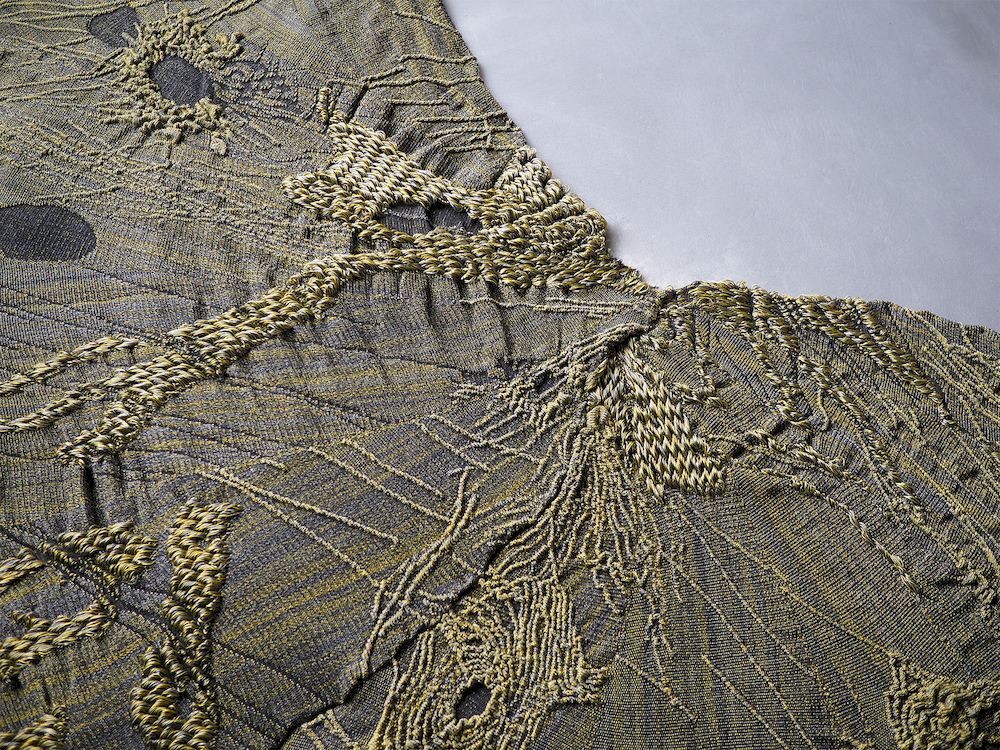
Venus Does Not Exist, 2021, courtesy of the artist
How did you come to combine textile with an interest in the cosmos?
Textiles have always been my medium, but rarely the direct subject in question. However the space race has always been a question, and I sometimes use textiles to answer. Beyond my practice, textiles serve as a technique, a tool, and a means of expression deeply embedded in humanity’s history. This anthropological and material significance makes textiles a key to understanding and a vessel for many of the questions I raise as a visual artist. The amount of links between the two subjects is immense, and it just gets me excited.
Chronologically, I began researching cultural relationships to outer space while studying at the Design Academy Eindhoven. This was fueled by my fascination with the history of exploration and the similar challenges faced in my home region. I consider them both as two-faced situations: on one side, there is unlimited wonder, while on the other, deep ethical, cultural, and scientific industrial issues arise.
Another key factor was applying for an exchange semester at the Rhode Island School of Design in Providence, USA. I was accepted and crafted my dream curriculum: a major in textiles with a focus on museum studies. This combination allowed me to learn coding complex knits on STOLL flatbed machines and weaving on 24-shaft Dobby looms while understanding how museum collections and archives come into existence. I felt incredibly lucky! It’s rare to gain industrial knowledge of textile machinery as a student, especially in such an inspiring academic environment.
I began closely studying the visual history of astronautics, examining probes and satellite images of ‘alien’ landscapes on Earth and beyond. I drew inspiration from the Fleet Library’s clipping files on aeronautics and the space race. You can imagine endless stacks of cut-out magazines and images, meticulously classified by year and subject—a true heaven. In the USA, I felt it was possible to envision a career and crucial to develop a meaningful perspective on the space race. As a Martinican woman of color in the creative field, I find it especially important to explore and express my views on this subject. Sometimes my sole presence feels strange!
In the atelier, my weaving teacher Susan Sklarek taught me to recognize patterns and use them to create impactful visuals. It might sound trivial, but this has profoundly influenced my creative decision-making to this day.
A few months later, I had more than 50 original hand-woven and industrially knitted samples, a comprehensive research project on the use of textile surfaces and containers on the International Space Station, and, most importantly, a renewed energy and creativity directed toward understanding what outer space as a ‘next frontier’ for humanity means.
I remember my time in Providence as my first experience addressing archiving, outer space, and textile-making simultaneously. I haven’t stopped since.
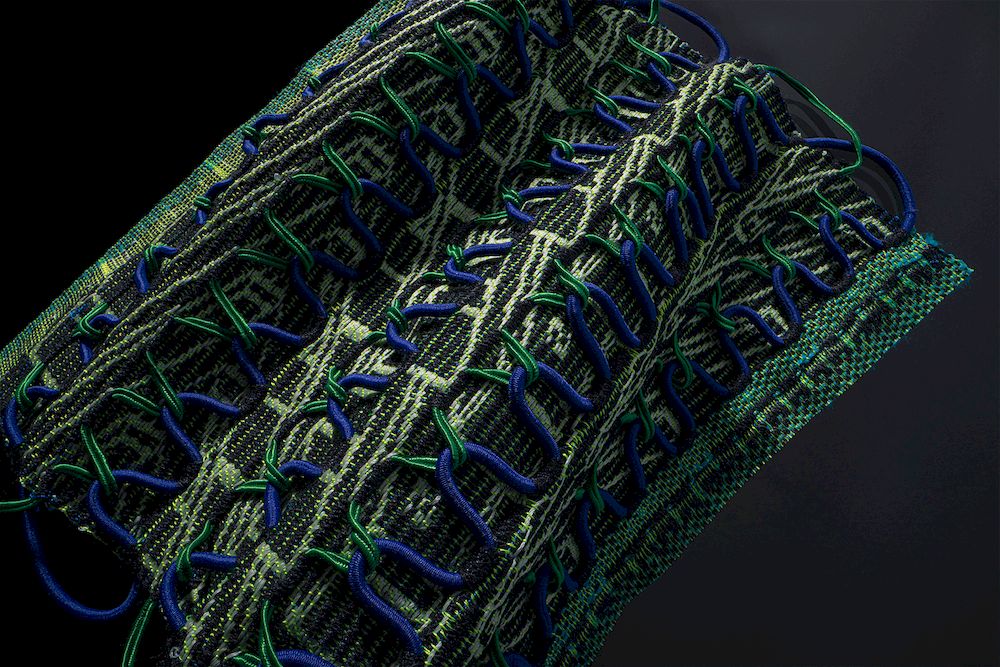
Textile sample handwoven on a 24 shafts Dobby loom, Photo: Marjon Trap
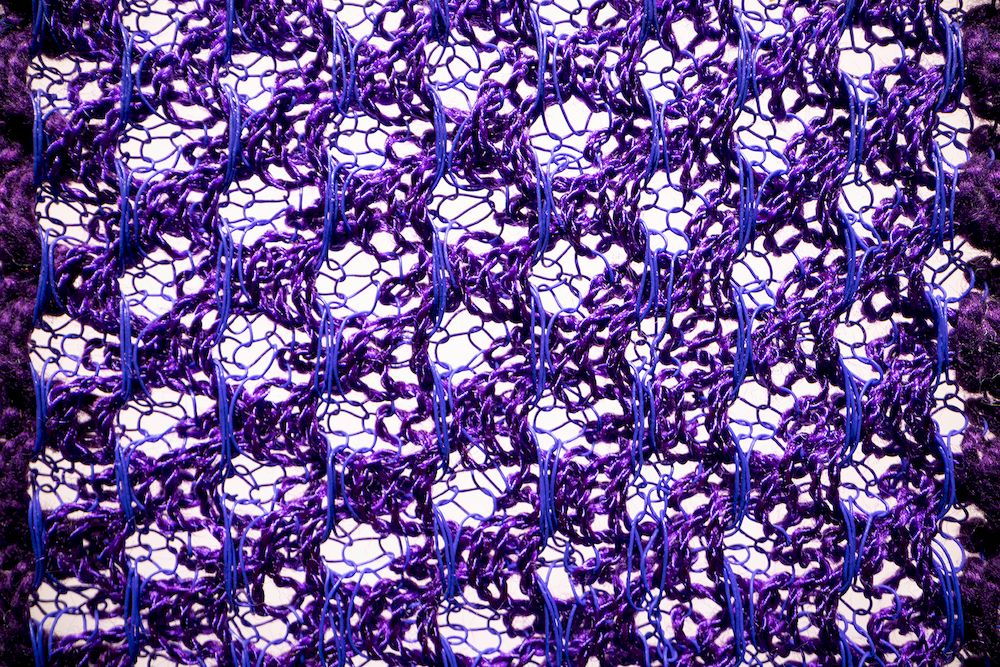
Textile sample industrially knitted on a STOLL flatbed knitting machine, Photo: Marjon Trap
Can you tell us about your project Mining the Sky and the method you use?
Mining the Sky, as a research project, began in 2019 with the question, ‘What could scarcity mean in space?’ This question arose from my reaction to the numerous discussions about extracting precious ore from asteroids as a solution to Earth’s limited resources. This inquiry has taken me a long way, and I am continually developing ideas around it. The project is as much about the experience of researching on an astronomical scale as it is about the subject itself.
As of today, it comprises multiple elements, including a series of printed panels, a deck of cards, and a visual catalog. The printed panels trace the research paths I took, first shown at the Shanghai Fosun Foundation for the Cosmological Elements exhibition. They are now being updated for an upcoming show. These panels are human-sized mappings of my research question about scarcity, the history of exploration, and the cosmos.
The card deck is autonomous, featuring my drawings of each probe and scientific mission that brought back data from comets and asteroids observation. The visual catalog is a pool of resources I would love to develop into a printed version. In all iterations, you will find extracts of sky maps. Visually, the card deck is a set of personified probes as constellations, while the visual catalog is text and imagery organized as an astronomy logbook.
It feels urgent to address the topic by learning about the interests and technology involved in mining extraterrestrial ore. What is important here is not whether some companies will eventually extract resources from these celestial bodies, as it is still highly theoretical today. The focus is on the discourse and ideals these endeavors represent and how these ideals are constructed.
The simple use of ‘we’ as humanity is intriguing—will such achievements benefit everyone? Historically, what happened when the West gained access to vast quantities of resources? How can this narrative break away from such a dark past?
This is why I added the subtitle “the pursuit of finitude” to address the desire to continue in a system that has already shown itself to be non-resilient. From that point, it becomes a creative exercise where I use comparative methods to seek similarities and differences between Earth-based and space-based mining. For instance, if a company brought a rock full of platinum metals to Earth’s desert to mine it, in this scenario, I can imagine a hyper-compressed labor market with many workers gathering around the mining site. The finite nature of the asteroid would eventually limit long-term work opportunities, creating externalities that challenge human rights. This is just one example among many.
Then comes the question of the mine versus asteroid as property. It is almost ironic that ‘mine’ is a possessive pronoun in the English language. Do geographies become mine if I call them so? Who could claim ownership of the mine? There’s an abundance in space, but it is mainly numerical. I consider it as a feeling of abundance since, even if an asteroid is a near-Earth object, its access is constrained by other factors limited by Earth infrastructures and geopolitics.
Let’s say we don’t have to bring the resources down to Earth and no human labor is involved. Humanity would still depend on a handful of powerful decision-makers and infrastructures that are 100% Earth-dependent. The market, as it functions today, already relies on the invisibility of the consequences of production and manufacturing, often located in distant landscapes and utilizing cheap labor, which reinforces existing racialized wealth disparities. As geographer Kathryn Yusoff beautifully puts it, “The claim to call one’s own one’s own was historically not a birthright under the genealogy of racial difference.” Given these factors, I ask: Since we are already facing these challenges on a terrestrial scale, what future do we foster by extending it both in time and space? These questions are important to raise. Mining the Sky is a very personal reading of them, where I draw, write, and collect all these bits of information in a very visual way. I document the routes of understanding and show the hesitations and dead ends. I can say it’s my method to cultivate a radical imagination.
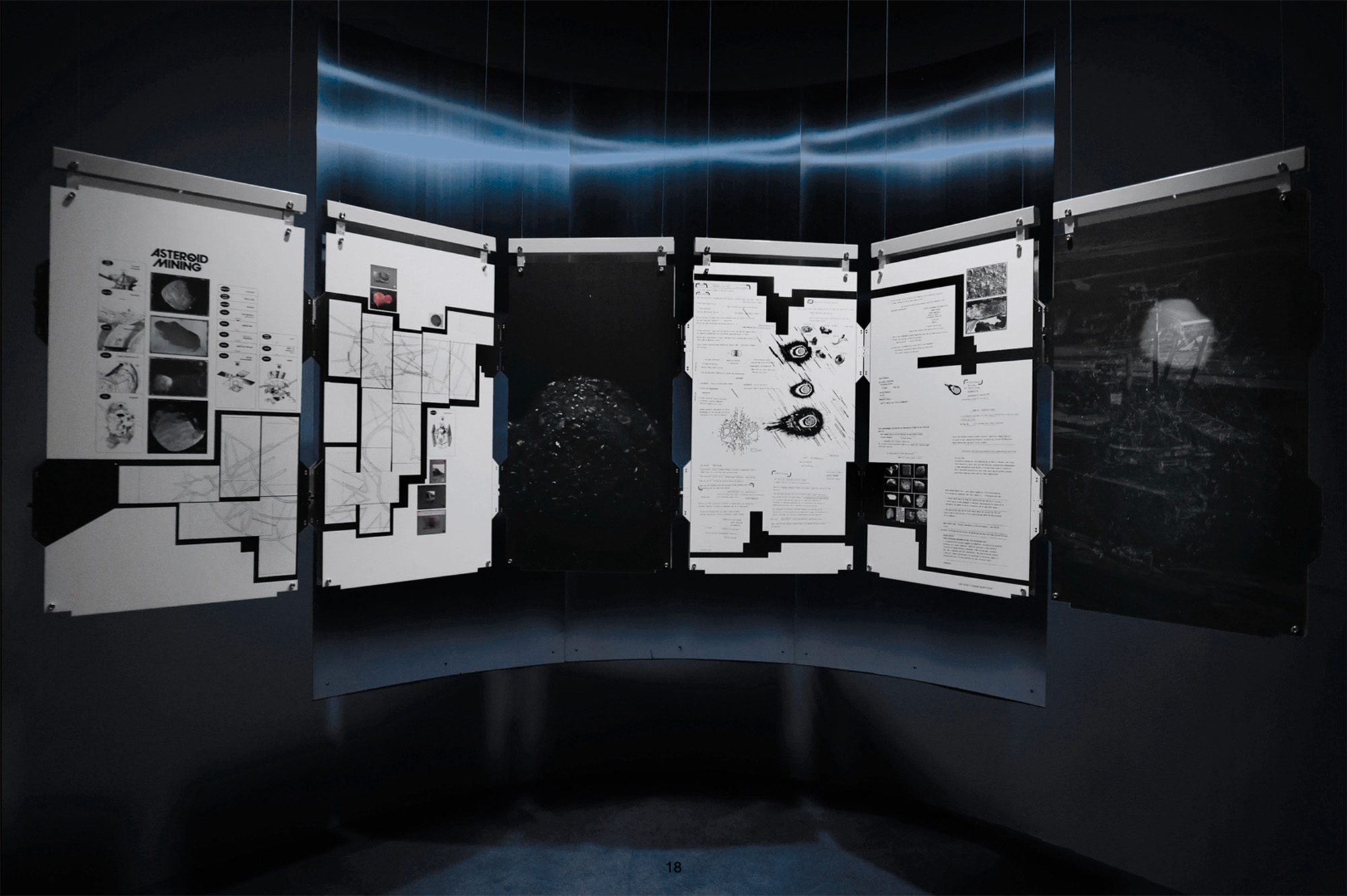
“Mining the Sky, the pursuit of finitude”, 2022 installation view during Cosmological Elements, Shanghai Fosun foundation, 350×120, UV print on metal
You’ve been doing research at the Sonnenborgh Observatory Library in Utrecht in the Netherlands. Can you tell us what motivated you?
Oh yes, I’ve spent a lot of time at the Sonnenborgh Library. It’s a beautiful space and I recommend visiting it if you pass by Utrecht. When I open a topic as big as this of human interaction with outer space resources, I pick a physical building or a precise collection to start from. Sonnenborgh was one of them.
Archives are containers of knowledge; like any container, they have a specific shape and a limit. To me, they get my mind going because the information they contain is organized spatially, from building to object. I’m particularly excited about astronomy archives because, for thousands of years, detailed observation of the sky has required the classification of vast quantities of information, and organizing them in readable ways requires a lot of ingenuity. At the Sonnenborgh, I was especially amazed by the diversity of atlas designs and observation logbooks.
So after a few weeks browsing and opening boxes, I mapped out the limit of my findings and then researched in other places, including online. But these preliminary limits help refine my research question or even refocus my study. In the case of this investigation into extraterrestrial resources, browsing highlighted the relevance of comets and impact craters to the concept of alien metals. I used a similar organization to that of logbooks to lay out my findings.
You postulate that space mining is a pursuit in space of the same goals as colonization, the gold rush, and question the lure of gain as a motivation for exploration. Could you elaborate on how you approach this?
Ah ah! I think it’s crucial to approach this as an artist, meaning that it is not my place to have the answer. The goals of colonization, if we only look at the period from the Middle Ages to the modern era from the European continent, are extremely diverse and evolved over a long period of time. What is important to do today is to not flatten history but embrace its thickness. When I address colonization, I mostly address how this era of so-called ‘great discoveries’ is told today, and directly affect the idea some could have of exploration. What I am interested in researching is the multiple facets of exploration.
To give you an example on the intricacies of history, I will cite the research of historian Camille Lefebre. We are in the 1850s, the British crown state, the African Mission, Heinrich Barth is part of it. He is known today as the father of Africanism for his outstanding detailed maps, scientific reports and travel exploits on the continent. Only, this notable man was guided by enslaved people. I won’t enter into details but, the two, named Abbega and Dorugu, later freed, were his servants, traveling companions, informers and intermediaries. Barth later returned in 1855 to Europe with them where they continued being extremely important intermediary to the identification, collection and description of Kanuri and Hausa as vehicular languages in a large part of West Africa and key factor for the British crown settlements.
This one example shows that discoveries are part of a much wider world and economy than that of one isolated heroic individual facing adversity. I find it fascinating to recognize patterns or narrative reflexes within history, because it gives hints on what to look out for in the present day narratives. Through this example we can ask what does individual heroism serve.
An impossible portrait of a man, often white, who, through his strong mind and strength, managed to overcome the greatest obstacle. However exploration is not just a matter of ego, it goes hand in hand with curiosity and humility. This is why I thought of this example from the British African mission. I wonder if we need more of this kind of storytelling, or if taking a look at the past might motivate us to describe the beauty of a certain necessary mutual aid facing ecosystems and cultures.
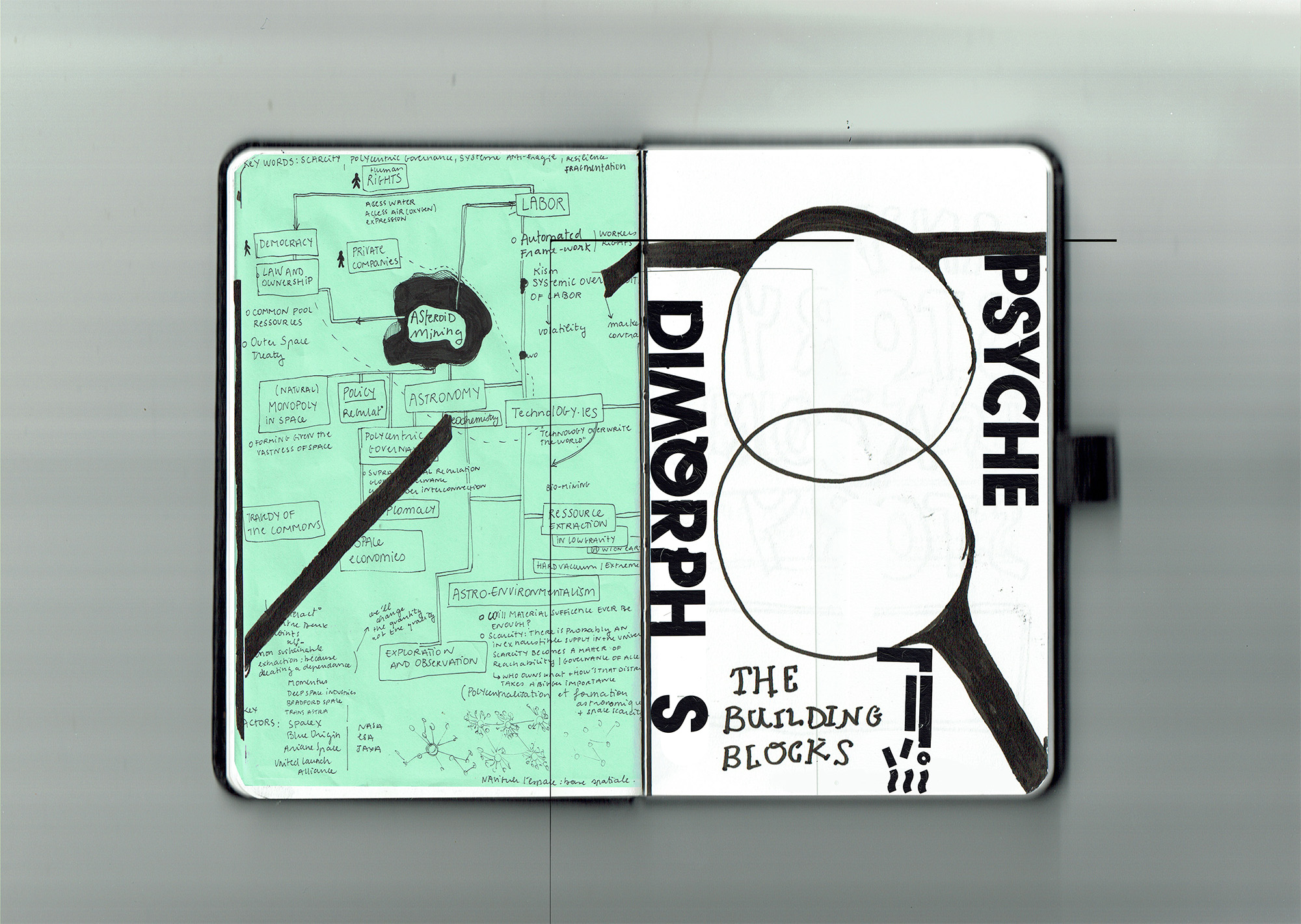
Mining the Sky, the pursuit of finitude, 2023, the artist notebook
What about the Caribbean, how do you connect creatively to the region today?
I definitely have a strong emotional attachment to the region. I will always be a kid from the mountain of Case-Pilote. I’ve also grown intellectually by seeing how important it is to study islands as a model for their history, cultural diversity, and specific ecosystems. I’m not alone in this undertaking; many artists and designers devote their practice to it and launch numerous local initiatives. I also believe that this is the beginning of a form of international recognition or enthusiasm for Caribbean art, music, literature, and ingenuity. Many people from our communities want this to be of lasting benefit to the region, rather than a passing trend.
I am currently finalizing two very exciting projects. One is a paper I am co-writing with anthropologist Marie-Line Mouriesse Boulogne, which I will present later this year at the International Astronautical Congress in Milan. It is entitled “Exploring Extraterrestrial Geographies Through the Historical Lens of the Caribbean Arc: Parallels, Implications, and Perspectives.” This paper is part of the session “Space for All: Decolonial Practices in Space,” which happens to be the first-ever panel focused on exploring decolonial practices in the space sector at the IAC.
The second project is a publication, also with Marie-Line, that stems from our desire to move beyond academic writing. We retrace the process of learning indigenous Kalinago basketry in Dominica and Martinique. This compilation, in English and French, deals with plant knowledge, dyes, and the relationship between craft and land use—ultimately reflecting the living, multi-faceted Caribbean identity. It includes mostly maps, photos from 20 years of research from the anthropologist’s work in the Kalinago Territory, along with our drawings and poetry extracts.
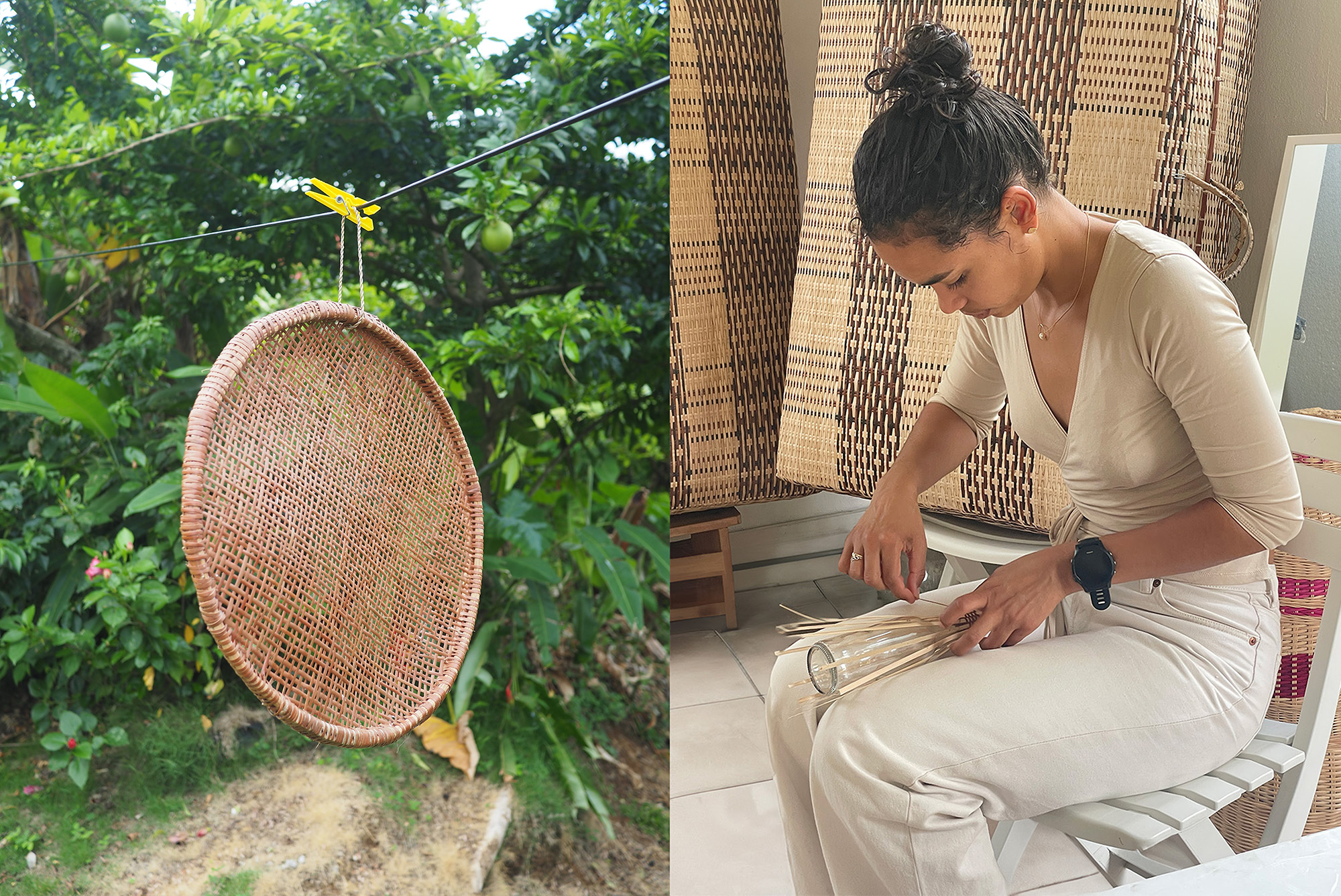
On the left, a “bichèt” (in creole) hanging in the Kalinago territory of Dominica, a traditional sieve used for cassava processing. On the right, the artist weaving in Martinique
You also seem to have a project cooking with Waag’s Space & Make Labs in Amsterdam, any ideas of what you’d like to explore?
Waag Future Lab in Amsterdam is one of the rare spaces that has both a textile lab and space lab under the same roof. I fostered links with the Space lab via the More Than Planet initiative, while conducting group research on ground use, affects, and remote sensing vision. I have learnt plenty in the last few years being an independent researcher and I feel that I am growing by collaborating with the community at Waag. It’s a good place to experience building imaginary visions as a group and to foster cross-disciplinary actions. I want to further investigate this strong bond between textiles and space, while keeping in mind the simplest yet most important finding of the year : hands tend to think faster than head!
More on Michèle Boulogne on her website.
- Se connecter ou s'inscrire pour publier un commentaire
- 63 vues
Connexion utilisateur
Dans la même rubrique
26/11/2025 - 17:28
Jean Bernabé, Jean-Luc Bonniol, Raphaël Confiant, Gerry L’Etang
24/11/2025 - 10:45
15/11/2025 - 21:52
Clotilde Matin ("Les Univers du Livre-Actualité")
15/11/2025 - 09:16
Commentaires récents
Serge Letchimy confronté à la justice pour son départ en retraite
Je ne sais pas ,mais ....
poi
26/11/2025 - 22:16
...je ne suis ni juriste ni spécialiste des finances municipales ,mais le montage (c'est bien l Lire la suite
70 footballeurs de renom appellent à exclure la Fédération Israélienne de Football
Bravo à eux !!!!
poi
24/11/2025 - 20:08
C'est la moindre des choses !!!Qu'on ne vienne pas nous bassiner avec l'argument éculé selon lequ Lire la suite
Kréyolad 1102: Lajistis an manniman
An grèv
abcx
23/11/2025 - 19:56
Mwen pa sav, mé sé bon réfleksyon. Ou sé di ki F k an grèv sé jou tala. Lire la suite
Nouvelle-Zélande. La culture maorie boutée hors de l’école
COMME LE HAKA......
poi
21/11/2025 - 10:09
Ce célébrissime chant de guerre maori est enseigné (j'espère que c'est encore le cas ) depuis qq Lire la suite
Serge Letchimy confronté à la justice pour son départ en retraite
RETABLISSEMENT
abcx
20/11/2025 - 22:34
"Confronté à la justice pour son départ en retraite". Lire la suite
Top 5 des articles
Aujourd'hui :
- Serge Letchimy confronté à la justice pour son départ en retraite
- Festival Écritures des Amériques - 25ème anniversaire
- Serge Restog célèbre le Noël créole
- Dirty food: racism and casteism in India
- Le site "Montray Kréyol" a 17 ans
Depuis toujours :
- Tous les présidents et premiers ministres de la Caraïbe sont vaccinés
- L'intolérable appauvrissement intellectuel et culturel de la Guadeloupe et dans une moindre mesure de la Martinique !
- LETTRE OUVERTE AU 31ème PREFET FRANCAIS DE MARTINIQUE
- L'arrière-grand-père maternel de Joan Bardella était...algérien
- Les triplement vaccinés contre le covid ne bandent plus

